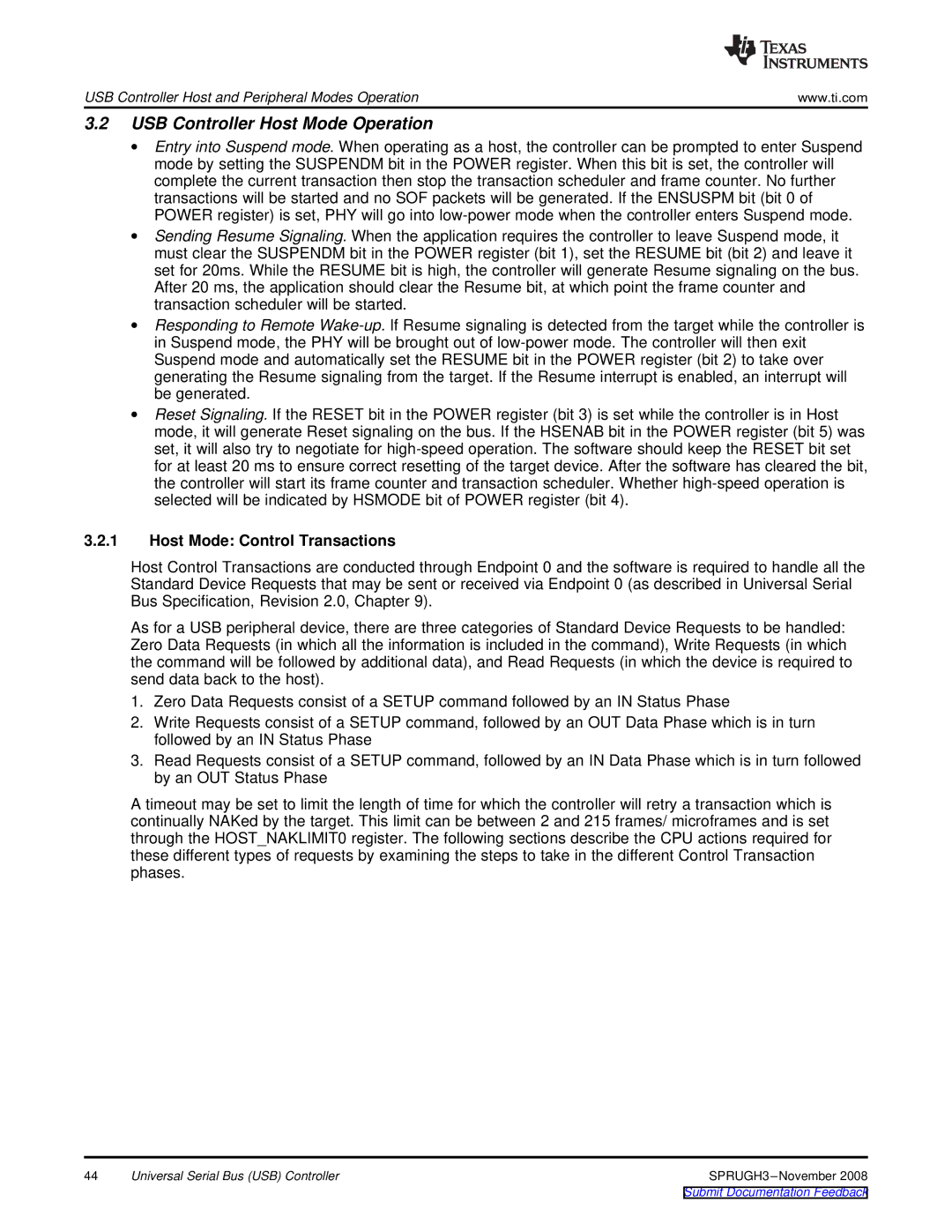
USB Controller Host and Peripheral Modes Operation | www.ti.com |
3.2USB Controller Host Mode Operation
∙Entry into Suspend mode. When operating as a host, the controller can be prompted to enter Suspend mode by setting the SUSPENDM bit in the POWER register. When this bit is set, the controller will complete the current transaction then stop the transaction scheduler and frame counter. No further transactions will be started and no SOF packets will be generated. If the ENSUSPM bit (bit 0 of POWER register) is set, PHY will go into
∙Sending Resume Signaling. When the application requires the controller to leave Suspend mode, it must clear the SUSPENDM bit in the POWER register (bit 1), set the RESUME bit (bit 2) and leave it set for 20ms. While the RESUME bit is high, the controller will generate Resume signaling on the bus. After 20 ms, the application should clear the Resume bit, at which point the frame counter and transaction scheduler will be started.
∙Responding to Remote
∙Reset Signaling. If the RESET bit in the POWER register (bit 3) is set while the controller is in Host mode, it will generate Reset signaling on the bus. If the HSENAB bit in the POWER register (bit 5) was set, it will also try to negotiate for
3.2.1Host Mode: Control Transactions
Host Control Transactions are conducted through Endpoint 0 and the software is required to handle all the Standard Device Requests that may be sent or received via Endpoint 0 (as described in Universal Serial Bus Specification, Revision 2.0, Chapter 9).
As for a USB peripheral device, there are three categories of Standard Device Requests to be handled: Zero Data Requests (in which all the information is included in the command), Write Requests (in which the command will be followed by additional data), and Read Requests (in which the device is required to send data back to the host).
1.Zero Data Requests consist of a SETUP command followed by an IN Status Phase
2.Write Requests consist of a SETUP command, followed by an OUT Data Phase which is in turn followed by an IN Status Phase
3.Read Requests consist of a SETUP command, followed by an IN Data Phase which is in turn followed by an OUT Status Phase
A timeout may be set to limit the length of time for which the controller will retry a transaction which is continually NAKed by the target. This limit can be between 2 and 215 frames/ microframes and is set through the HOST_NAKLIMIT0 register. The following sections describe the CPU actions required for these different types of requests by examining the steps to take in the different Control Transaction phases.
44 | Universal Serial Bus (USB) Controller |
